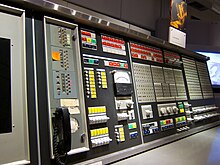The History of Microsoft Window’s Early Operating Systems
 Window’s got its name from the then-new layout of operating systems, where a mouse was used to open a separate frame, or window, for each process or application. The changes from one version to the next were everything from subtle, but faster or smoother, or dramatically different and new. Here is a brief history of the development of the Windows operating system:
Window’s got its name from the then-new layout of operating systems, where a mouse was used to open a separate frame, or window, for each process or application. The changes from one version to the next were everything from subtle, but faster or smoother, or dramatically different and new. Here is a brief history of the development of the Windows operating system:
*Windows 1.0-The first Windows OS, released in 1985, to implement “windows” instead of the linear DOS format. At this point, multitasking was basically nonexistent and graphics were quite primitive.
*Windows 2.0-Released in 1987. At this time in computer development, the processing speed and storage capacity was incredibly slow compared to today’s computers. As technology improved, new operating systems like this one were made to take advantage of gradual improvements.
*Windows 3.0-Released in 1990, this is the OS that began to be more widely used in everyday businesses. Computers were being used by businesses more widely by now. This was before Internet service was invented.
*Windows NT’s (1993 to 1996)-NT stood for new technology. This was a significant step in computer programming where the whole concept of operating systems was built from scratch. The result was designed somewhat like they look today-desktops had icons, and windows could be opened and layered. There were four similar versions of Windows, serving various purposes or implementing new technology, like networking for businesses: Windows NT 3.1, Windows for Workgroups 3.11, Windows NT Workstation 3.5 and 4.0. At this time computers were basically only used in businesses and still quite primitive in comparison to today’s computers.
*Windows 95-Released in, you guessed it, 1995. This is probably the oldest OS still in operation today, even though it is no longer supported by Microsoft. This was the first computer to include TCP/IP, the protocol that enabled dial-up Internet. Internet access was first introduced to the public at this time, which highly increased the adoption and usage of computers by businesses outside of the technological world.
*Windows 98-Released in 1998, this was the first OS to be created for consumers, and the popularity of a “personal computer” gained momentum. As the Internet and using computers by laypeople, the need for creating computers that anyone could use grew significantly. From this point, significant changes in layout and features took place to improve usability by consumers. This is reflected in the Windows 98 Second Edition that was released the following year.
*Windows Millennium Edition-Released in 2000, again improved the usability of previous versions. At this point, there were basically two versions of OS’s: the NT Workstation 4.0 for businesses, and the 98 for consumers. This was the last of the 98 consumer models.
*Windows 2000 Professional-Also released in 2000, was an upgrade to the NT Workstation 4.0 “business” OS.
*Window XP-Released in 2001, this version marked a significant change-and success-for Microsoft. This version was a sort of clean slate for Windows OS. XP (stands for “experience”) was a new approach that replaced the all the previous versions of Windows and eliminated the business/consumer distinction. XP transformed usability and functionality of Microsoft OS’s, and still holds over half of the current market share of all operating systems (from any company) combined-nearly 10 years later! It was also the primary OS of Microsoft until 2007, which makes it the longest lasting OS since the company began.
Since then, two new versions of OS’s have been released and brought significant changes that would be unfathomable to the first computer programmers and technicians. To learn more about Microsoft Windows’ history and features of new OS’s, check out .
